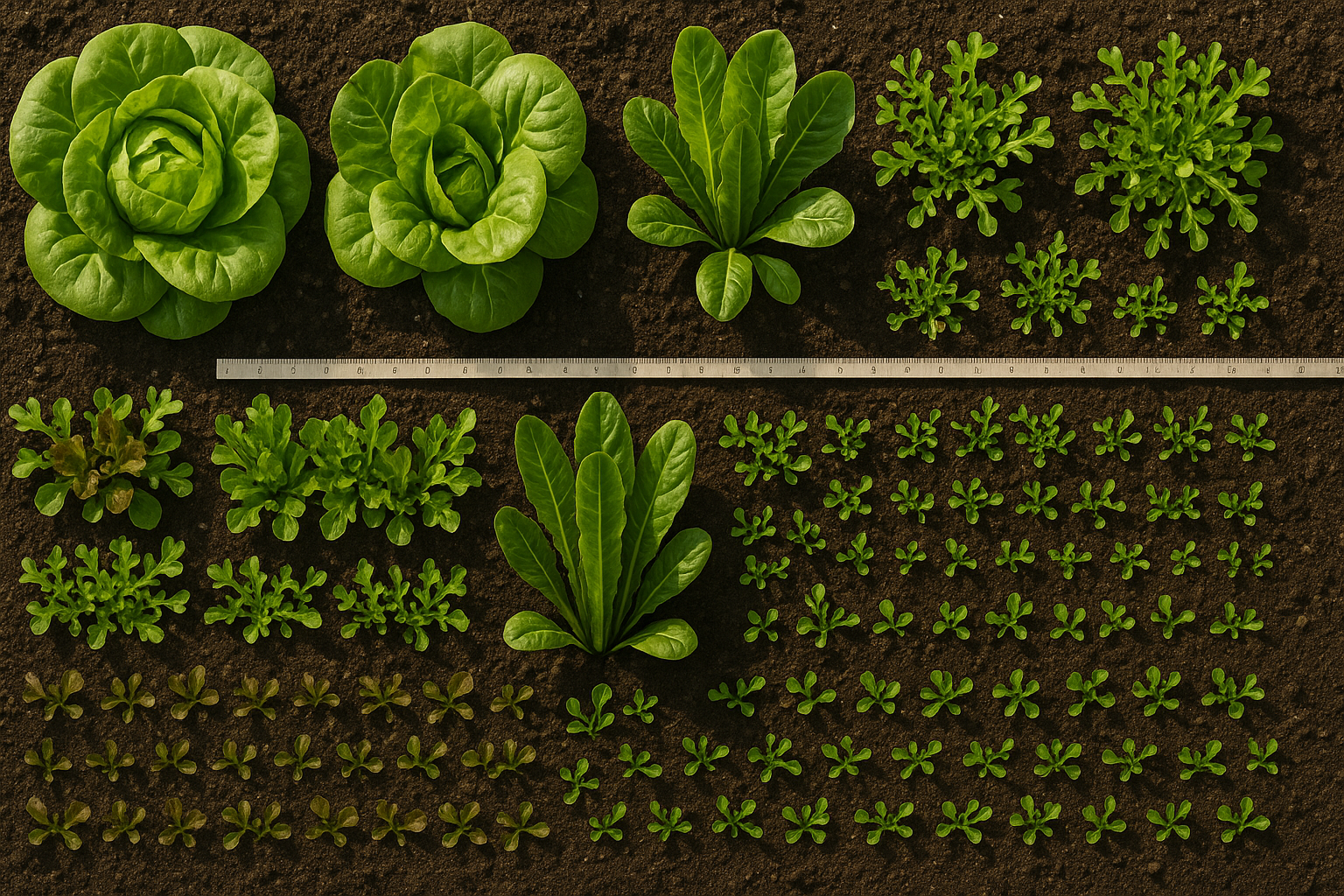Introduction to Lettuce Spacing and Density
When planning your garden or urban farm, understanding lettuce yield per square meter is key to making the most of your available space. Whether you’re a home gardener eager to fill a small raised bed, an urban farmer maximizing every leaf from a rooftop plot, or a commercial grower balancing cost and productivity, the number of heads you can harvest per square meter directly impacts both your harvest and your satisfaction.
The trick is to maximize lettuce yield per square meter while ensuring each plant gets what it needs to thrive—light, air, and nutrients—because overcrowding can invite disease and stunt growth.
Planting density is a balancing act influenced by several factors. Different lettuce varieties, such as loose-leaf, romaine, or crisphead, each have their own ideal spacing requirements. Your growing method also plays a big role: hydroponic systems and soil beds may allow for varying densities, and vertical farms can stack production in new ways.
Climate matters too: plants spaced closely together may suffer in humid environments but benefit from extra warmth in cooler regions. By tailoring your approach based on these factors, you can boost your lettuce yield per square meter while keeping your crop healthy and delicious, making every square meter of your growing area count.
Types of Lettuce and Their Space Requirements
When planning your lettuce garden, understanding the space needs of different types is key to a bountiful harvest. Head lettuces, like iceberg or butterhead, require plenty of room since they form large, compact heads. It’s best to space these 25 to 30 cm (10–12 inches) apart to allow each head to develop fully without competing for sunlight or nutrients.
Romaine, also known as cos lettuce, has upright, elongated heads and is a bit less demanding—spacing plants 20 to 25 cm (8–10 inches) apart usually works well.
Leaf lettuces, such as Black Seeded Simpson or Oakleaf, are the most space-efficient. Because they don’t form tight heads, they can thrive with just 15 to 20 cm (6–8 inches) between plants. This means you can fit many more leaf lettuce plants per square meter compared to the others.
For example:
- Head lettuces spaced 30 cm apart allow about 10–12 plants per square meter.
- Leaf lettuces spaced at 15 cm can fit around 35 to 40 plants per square meter.
Tighter spacing not only increases your overall yield but also helps shade out weeds. Just remember, crowding plants too much can lead to poor air circulation and a higher risk of disease, so always stick to the recommended distances.
By matching the right lettuce variety with optimal spacing, you’ll maximize both the quality and quantity of your greens.
Calculating Lettuce Heads Per Square Meter
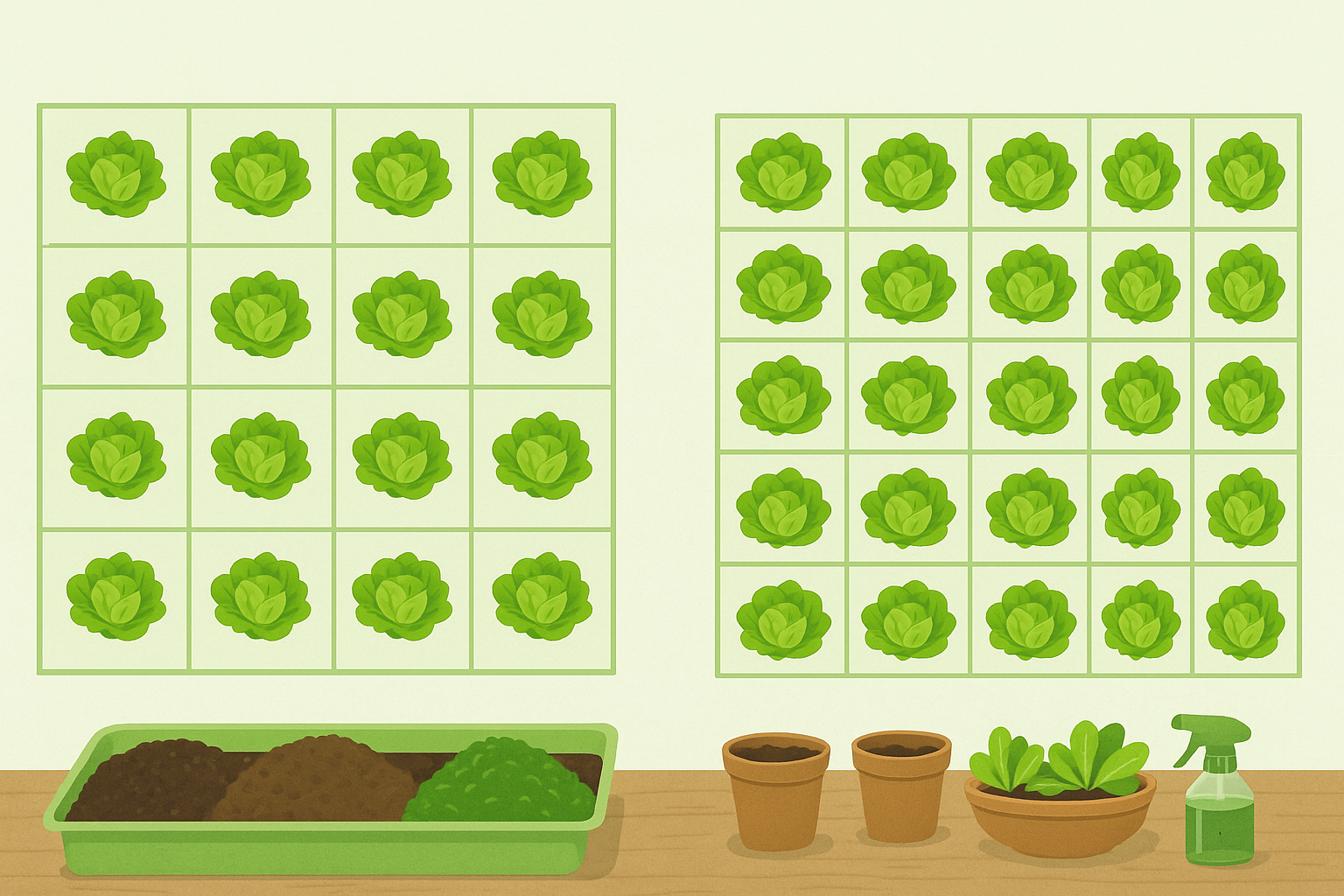
Calculating the number of lettuce heads you can grow per square meter starts with understanding plant spacing. Lettuce typically needs enough room to ensure good airflow and access to sunlight, which helps prevent disease and encourages proper growth.
For most lettuce varieties, a common spacing is 20 cm between each plant in both directions. To determine how many plants fit in a square meter, convert the spacing to meters (0.2 meters), then calculate how many rows and columns fit: 1 ÷ 0.2 = 5 plants per row and per column. Multiply the rows and columns—5 x 5—resulting in 25 lettuce heads per square meter.
If you want tighter spacing, say 15 cm (0.15 meters), then 1 ÷ 0.15 ≈ 6.6, so about 6 full plants per row and column; 6 x 6 equals 36 heads per square meter. However, this increases the risk of disease and smaller heads.
Quick Reference Chart
- 30 cm spacing: 11 heads/m²
- 20 cm spacing: 25 heads/m²
- 15 cm spacing: 36 heads/m²
While planting more densely can boost yield, it’s a trade-off—overcrowded lettuce may compete for nutrients, grow poorly, and be more susceptible to fungal issues. On the other hand, too much space means fewer plants and less efficient use of your area.
A useful real-world tip is to plant at a moderate distance (like 20 cm) to encourage healthy growth and reduce maintenance. You can also stagger rows (triangular planting) to squeeze in a few extra heads without overcrowding.
Ultimately, finding the right balance depends on your lettuce variety, climate, and maintenance routine—experiment on a small patch before scaling up.
Factors Affecting Growth Density
When planning for dense planting, soil quality and nutrient availability form the foundation for healthy growth. Rich, well-draining soil packed with organic matter can support more plants per square foot by providing consistent access to water and nutrients. Before planting, test your soil and amend it with compost or natural fertilizers, focusing on nitrogen and phosphorus, which are critical for rapid, lush growth.
For example, leafy greens like lettuce thrive in nitrogen-rich environments, allowing them to grow closer together without competing. Sunlight is equally essential; most dense plantings need at least 6-8 hours of direct sunlight to prevent legginess and fuel photosynthesis.
Good airflow between plants reduces humidity and keeps leaves dry, making it harder for diseases like mildew and blight to take hold. You can improve airflow by spacing plants slightly farther apart and rotating rows to align with prevailing winds.
Climate and seasonality also play major roles. Cool-season crops like spinach and radishes can often handle tighter spacing in spring or fall since lower temperatures slow pathogen growth and reduce plant stress. In hot, humid summers, disease pressure rises, so allowing more space between plants helps keep foliage dry and healthy.
Always adjust your planting density based on both your regional weather patterns and the specific season you’re growing in; what works for a spring garden in Oregon might not suit a summer crop in Texas. By considering all these factors, you’ll maximize yield while minimizing risk.
Traditional, Hydroponic, and Vertical Methods Compared
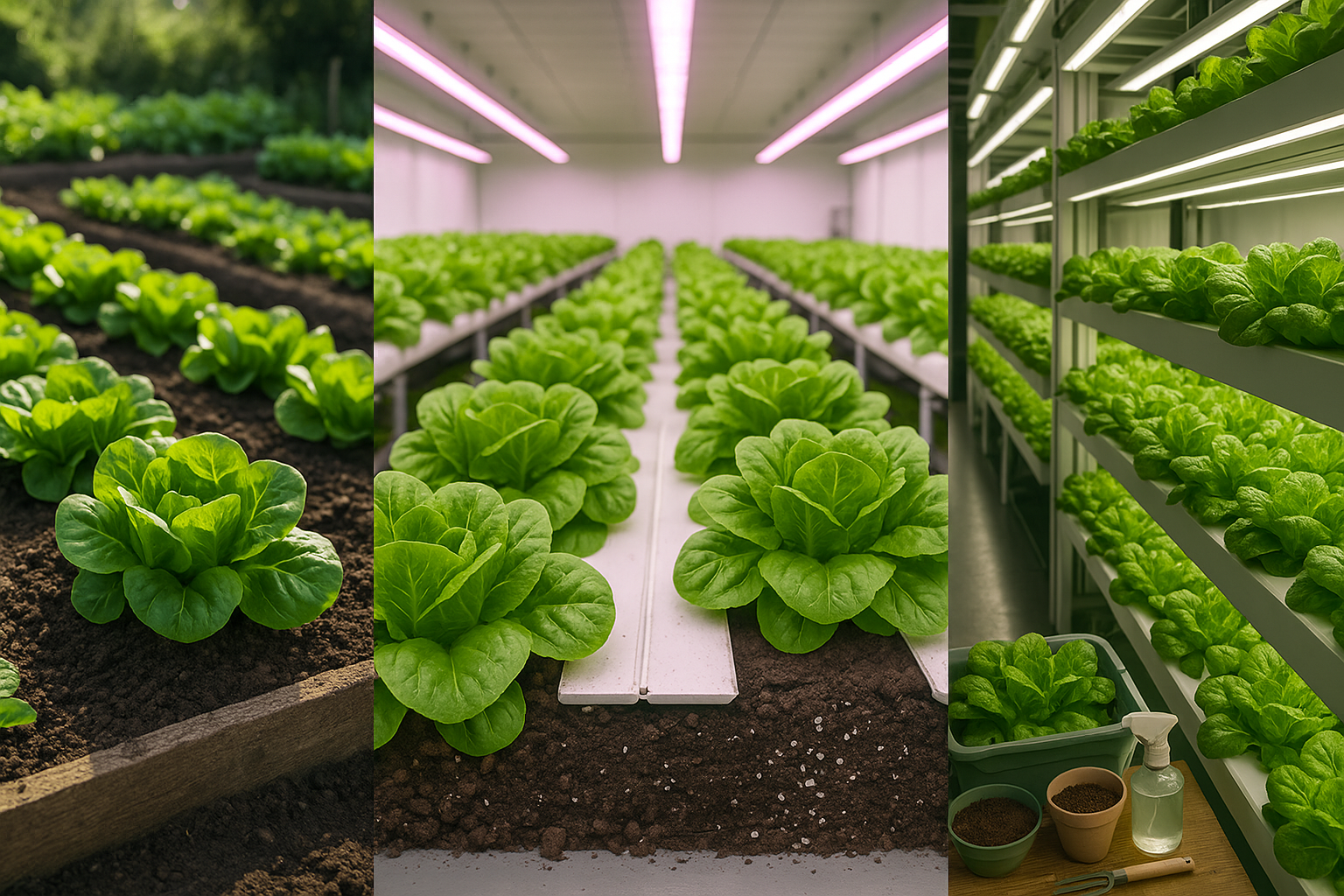
When it comes to growing lettuce, the method you choose can significantly impact how many heads you harvest per square meter. Traditional soil-based methods typically yield about 10 to 20 heads of lettuce per square meter. This approach is straightforward and cost-effective if you have outdoor space, but it’s limited by soil quality, weather, and pests, requiring regular weeding and watering. For example, small family farms often use raised beds, providing consistent but modest yields.
Hydroponic systems, on the other hand, can increase that number to 30 or even 40 heads per square meter because plant roots receive nutrients directly through water, maximizing growth and allowing for closer spacing. The benefits include impressive yields and cleaner, faster-growing lettuce, but setup costs and the need to monitor pH and nutrient solutions are definite drawbacks. Commercial greenhouses using hydroponics, like those in the Netherlands, consistently outperform traditional fields.
Vertical farming takes space efficiency to the next level; by stacking growing layers, producers can reach densities of 50–100 heads per “floor” per square meter footprint. Indoor vertical farms, like AeroFarms in the U.S., grow lush crops year-round in controlled environments, free from pests and unpredictable weather. However, vertical farming involves high initial investments, significant energy demands (especially for lighting), and complex maintenance.
In summary, while traditional soil growing is simple and accessible, hydroponics delivers higher yields with more effort, and vertical farming maximizes space but requires advanced systems and greater costs. Your choice will depend on your available resources, space, and long-term goals.
Tips for Maximizing Lettuce Yields
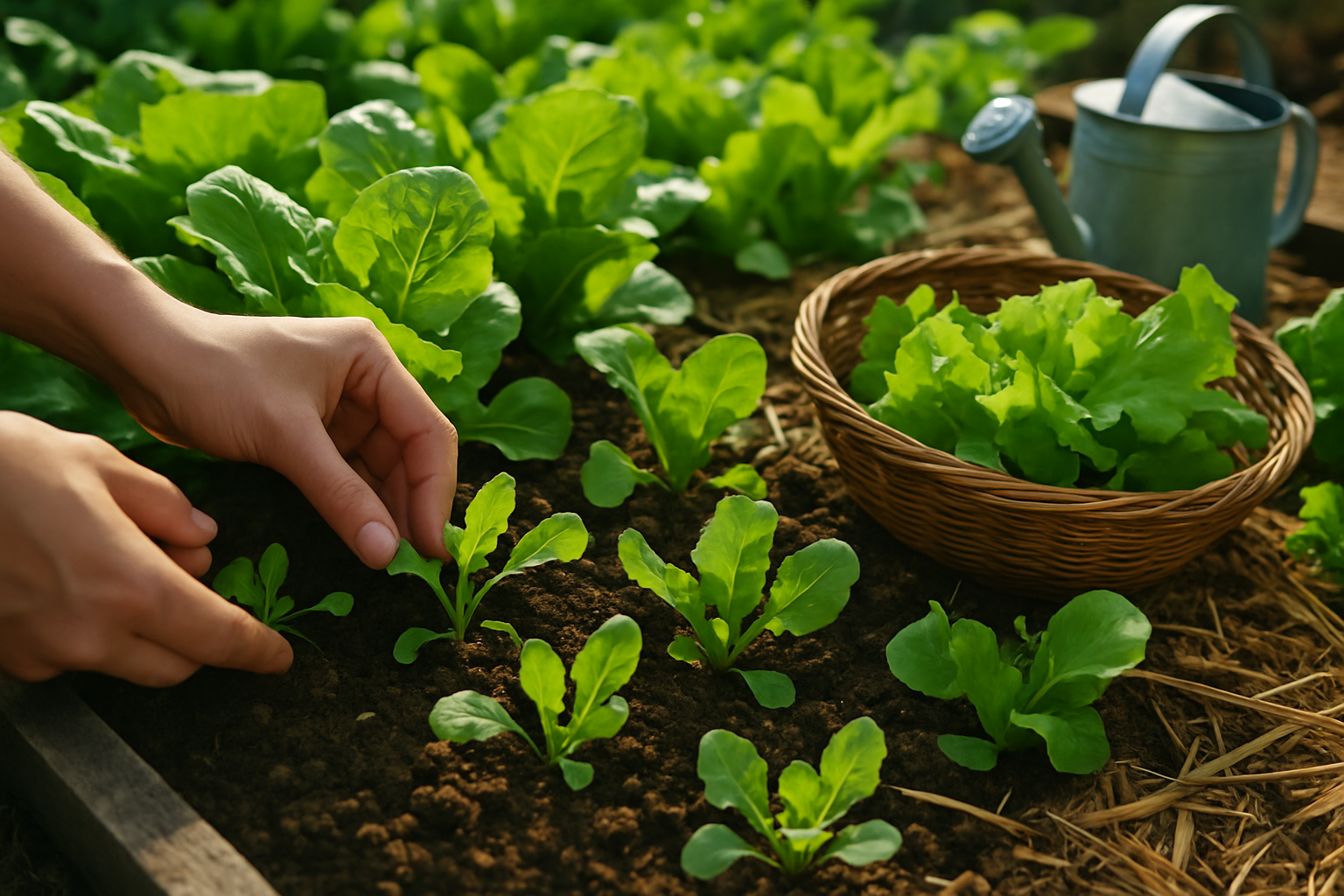
To get the most lettuce from your garden, try planting in succession. Instead of sowing all your seeds at once, plant a small batch every two weeks throughout the season. This approach ensures you always have fresh lettuce maturing and ready to pick, avoiding periods of both glut and scarcity.
As seedlings grow, be proactive about thinning—gently remove the weakest plants so each remaining head has enough space to mature. Don’t toss your thinnings; use them as tender baby greens in salads.
When it comes time to harvest, take only the outer leaves from each plant rather than pulling up the entire head. This allows the plant to keep growing and producing new leaves, leading to multiple harvests from a single sowing.
For high-density beds, focus on airflow and even watering. Water early in the day to prevent dampness overnight, which can invite mildew or rot. Add a light layer of mulch to keep soil cool and retain moisture, but make sure it doesn’t crowd the base of the plants.
Finally, keep an eye out for pests such as slugs—regular checks and organic controls can help you maintain lush, productive lettuce beds all season long.
Common Mistakes and Troubleshooting High-Density Plantings
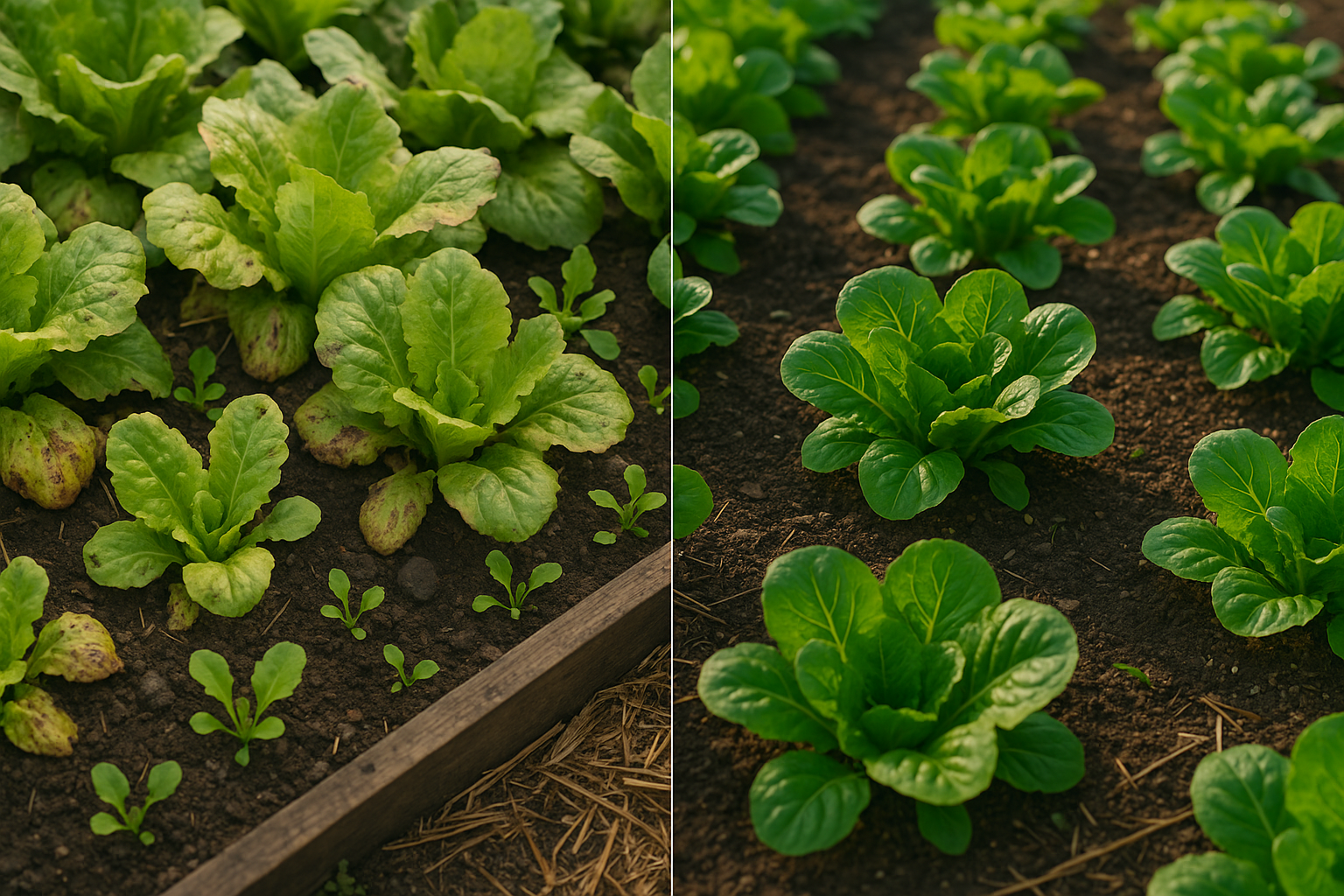
High-density plantings can maximize your garden’s yield, but they come with pitfalls if not managed carefully. One frequent mistake is overcrowding, which limits airflow and sun exposure, leading to spindly plants or an increased risk of disease. Signs of overcrowding include yellowing leaves, stunted growth, and mold or mildew on lower foliage. Avoid this by following recommended spacing guidelines—even if it feels sparse at first—and thinning seedlings early on.
Another issue is bolting, especially with leafy greens like spinach or lettuce. This can happen more readily in compact plantings due to competition and heat stress. To prevent premature bolting, give each plant adequate water and harvest outer leaves regularly to reduce pressure.
Pest pressure can also intensify in dense beds, as pests and diseases spread quickly when plants touch or crowd each other. Combat this by rotating crops, interplanting with pest-repelling herbs (like basil or marigolds), and manually inspecting leaves for early signs of trouble.
Ultimately, the key to success with high-density gardening lies in observation and adaptability: check your plants often, look for subtle changes, and don’t hesitate to thin or rearrange if needed. Trial and error are part of the learning curve, so keep notes on what works in your unique space, and adjust each season to strike a healthy balance between productivity and plant health.
